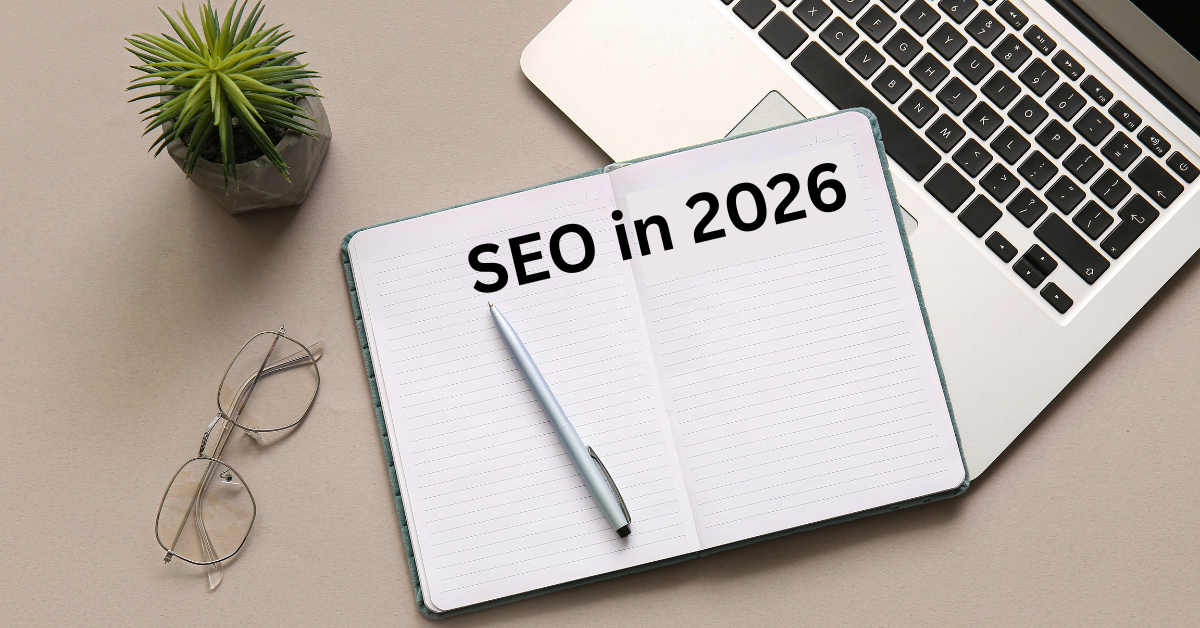If you have a website, you’ve probably heard about SEO. It stands for Search Engine Optimization, which simply means helping your website show up on Google when people look for something. Most businesses are doing it. They write blogs, use keywords, and hope people click their links. It’s like standing in a crowd and shouting, “Look at me!” The problem is, everyone is shouting. The internet is full of similar posts, all trying to grab attention. Even if people visit your site, they might leave right away. They came, they looked, and they left. That happens because SEO gets people to your page but doesn’t always make them care. The smart marketers are learning that being seen isn’t enough anymore. It’s not just about traffic; it’s about trust and connection. That’s where something new comes in RAO. It stands for Relationship or Audience Optimization. While SEO focuses on search engines, RAO focuses on people. SEO helps people find you. RAO helps people remember you.
What SEO Really Does and Why It Still Matters
SEO helps search engines understand your website.
For example, if you sell handmade soap, and someone searches “best natural soap,” SEO helps your site appear in the results.
It works in a few simple ways:
- Your website should load fast and look good on phones.
- Your writing should include words people actually search for.
- Other websites should link to yours, showing that you’re trustworthy.
When you do these things, search engines think your site is useful. That helps you get more visitors without paying for ads. So yes, SEO still matters. But today, everyone does it. Every brand writes articles, adds keywords, and follows the same steps. Being “optimized” used to be special. Now it’s just normal. To stand out, you have to go beyond SEO. You need to make your visitors feel something. That’s where RAO changes the game.

Why SEO Alone Doesn’t Work Anymore
SEO can get people to your website, but that doesn’t mean they’ll stay or buy something.
The internet is overflowing with blogs, guides, and how-to articles that all sound alike. Try searching “best running shoes” or “easy dinner recipes.” You’ll see the same tips over and over. When everything looks the same, people stop paying attention.
Ranking high on Google doesn’t mean people trust you. They might click, glance, and go back. That’s not success, that’s a missed chance. SEO also depends too much on Google’s changing rules. Every time Google updates its system, your rank can go up or down overnight. Relying only on SEO is like building a house on sand. You’re always worried the ground will shift. RAO is different. It focuses on people, not algorithms. It asks, “What does my audience care about? How can I build trust?”
SEO gets you traffic. RAO gets you loyalty.
What RAO Is and Why It’s Smarter
RAO stands for Relationship or Audience Optimization. It’s not a trick or a trend — it’s a smarter way to connect with real people online. While SEO is about helping people find you, RAO is about helping people like you. It’s about making your audience feel understood. Instead of just posting keywords, you share stories. Instead of just explaining what you sell, you explain why it matters.
Here’s the simple difference between the two:
| SEO | RAO |
| Focuses on search engines | Focuses on people |
| Uses keywords to rank | Builds relationships |
| Measures traffic | Measures trust and engagement |
| Brings visitors | Keeps visitors coming back |
RAO doesn’t replace SEO, it builds on it. You still need to show up on Google, but once people find you, you need to give them a reason to stay.
RAO helps you do that by being human, kind, and clear.
The Big Idea Behind RAO
Search engines want to give people helpful results. Every time Google updates its system, it rewards pages that are useful and easy to understand. That’s exactly what RAO is about creating for people first. To do that, you start by knowing your audience. Who are they? What problems do they have? What are they looking for?
If you know those things, you can write in a way that feels personal. You’re not just selling something; you’re helping someone. Writing in a simple, friendly voice helps too. You don’t need fancy words. Just talk like a person. Instead of saying “maximize engagement potential,” say “make your content more interesting.” People don’t connect with perfect writing. They connect with real voices and honest stories. That’s the heart of RAO being human online.
SEO and RAO Work Better Together
SEO and RAO aren’t enemies. They’re teammates. SEO helps people find your website. RAO helps them stay, care, and come back.
Think of it like this: SEO is the road that leads people to your store. RAO is what happens when they walk in and feel welcome.
| Focus | SEO | RAO |
| Goal | Get attention | Build connection |
| Tool | Keywords | Conversations |
| Result | Traffic | Trust |
| Impact | Short-term | Long-term |
Imagine a small bakery. SEO helps it appear when someone searches for “fresh bread near me.” RAO happens when the bakery shares stories about their bakers, shows behind-the-scenes photos, and thanks customers by name. SEO gets them found. RAO makes them loved. Together, they build a strong, lasting brand.
How RAO Makes SEO Even Stronger
RAO doesn’t replace SEO, it makes it work better.
When people enjoy your content, they stay longer, share it more, and return often. Those actions send positive signals to Google, which can help your rankings rise.
Here’s how it works:
When you write for people, not just for keywords, visitors spend more time on your site. They explore your pages instead of leaving right away. When people like what they read, they share it with others. That brings in new visitors and sometimes earns links from other websites. When your readers feel a real connection, they leave reviews and comments. Google notices that too.
And if Google ever changes its system again, you’ll still be fine, because people will keep coming back out of habit and trust. RAO makes your brand stronger than any algorithm.
SEO vs RAO — A Smart Comparison
If you’ve heard of SEO, you know it’s about helping your website show up on Google. But there’s another idea called RAO short for Relationship and Audience Optimization. It’s about building real connections with the people who visit your site.
Think of SEO like putting up a bright sign that says, “Come visit my shop!” RAO is what happens after they walk in how you treat them, what you show them, and how you make them want to come back.
What SEO Does Best
SEO helps people find you. It’s all about making sure search engines understand what your pages are about. That means choosing the right words, writing clear titles, and having good links so your site can show up high in search results. SEO is great for getting new people to your website. But it mostly focuses on how search engines see your site, not how people feel when they’re there.
What RAO Does Best
RAO focuses on your visitors what they like, what they need, and what keeps them coming back. It’s about trust and care. When you use RAO, you create content that feels personal, helpful, and friendly.
Instead of just answering a question and moving on, RAO encourages real connection. You give people stories, advice, and tools that make their lives easier or better.
How They Work Together
SEO and RAO are like two sides of the same coin. SEO gets people through the door; RAO makes them stay. A good website uses both. You want to show up when people search that’s SEO. But once they click, you want to make them feel seen and understood. That’s RAO. When you mix the two, your website doesn’t just get traffic. It gets fans.
How RAO Helps SEO Grow Stronger
RAO doesn’t replace SEO. It makes it better. When people enjoy your site, Google notices. Search engines pay attention to what visitors do. If people stay longer, read more pages, or come back later, it tells Google your site is worth showing to others.
Why People Matter Most
If your website is boring or confusing, people leave fast. That hurts your SEO. But if it feels friendly and helpful, they stay. They click on other pages. They might even share your content with friends. That kind of real engagement is what search engines love. They want to show results that make people happy. So when your readers are happy, your SEO naturally improves.
Making Content That People Enjoy
RAO helps you write in a way that connects. It’s not just about using the right keywords it’s about speaking to your readers like real people. Use stories, examples, and plain talk. Offer solutions that feel made for them. The more people enjoy what you share, the more they trust you. And trust turns into better rankings and loyal visitors.

The Three Pillars of RAO Success
RAO works best when you follow three simple ideas: know your audience, make it personal, and keep improving.
Know Your Audience
Before you can connect with your readers, you have to understand them. What problems do they have? What do they care about? Spend time listening, reading comments, checking messages, or asking questions. The better you know your audience, the easier it is to create content that truly helps.
Make It Personal
People like to feel special. If everyone gets the same thing, it feels generic. Try to make your content fit the person reading it. For example, a beginner might need simple guides, while an expert wants advanced tips. When you give each person what fits them best, they’ll appreciate your site more and return for more.
Keep Improving
Don’t guess what works, watch what people actually do. See which pages get the most visits and where people stop reading. Use that info to make small changes. Add what’s working, fix what’s not. Over time, you’ll understand exactly what your audience loves and what turns them off.
How to Move From SEO to RAO
Switching from SEO to RAO isn’t about throwing out what you’ve done. It’s about adding more heart and understanding to your strategy.
Start by Looking at What You Have
Check which pages get the most visits. Then ask: do people stay on these pages, or do they leave quickly? Pages with lots of traffic but short visits are a clue — you’re ranking well but not connecting yet. That’s your chance to bring in RAO thinking.
Learn Who’s Visiting You
Look beyond numbers. Think about who your readers are. What age group are they? What are they trying to do when they come to your site? The more you learn about them, the easier it is to speak in a way that feels personal and warm.
Change Your Content Style
Make your pages easier to read. Use shorter paragraphs, friendly language, and examples that make sense in everyday life. Add photos, questions, or fun activities that make people want to explore more.
When visitors feel understood, they don’t just read, they engage.
Bring Your Team Along
If you work with others, help everyone understand the shift. Writers, designers, and marketers should all think about the audience first, not just search engines. When your whole team focuses on people instead of clicks, your content naturally gets better — and your SEO improves, too.
Brands That Win With RAO
Lots of businesses are already seeing how RAO changes the game.
The Online School That Got Personal
A learning website noticed that many visitors came from search engines but didn’t stick around. They changed their approach by asking visitors what level they were beginner, medium, or advanced and then showed lessons that matched. Once they did this, people stayed longer and returned more often. Their SEO improved too, because Google saw users spending more time on their site.
The Health Blog That Built a Family
A small health blog added personal touches, comments, community questions, and stories from real people. Visitors felt like they were part of something, not just reading facts. The result? More readers subscribed, came back every week, and shared the blog with friends.
The Shop That Made Shopping Fun
An online clothing store stopped showing everyone the same products. Instead, they asked shoppers about their style and showed clothes that matched. They also added photos and stories from real customers. Sales went up, people stayed longer, and many became repeat buyers. Search rankings improved because more people interacted and returned. RAO helped all these brands do one thing: treat their audience like people, not just clicks.
What to Measure in the RAO Era
A while ago, everyone online cared about one thing: how high they could show up on Google. If you ranked number one, it felt like you’d won. But that old way of thinking doesn’t work anymore. Getting people to visit your website is only half the story. What matters now is what they do once they’re there. Do they stay? Do they smile? Will they come back again?
That’s what RAO helps you see not just traffic, but true connection.
More Than Just Clicks
Imagine you open a store, and a hundred people walk in but leave right away. That’s not real success, is it? You got attention, but no one actually cared.
It’s the same with websites. A click only shows that someone got curious. What matters more is if they stick around to read, learn, or buy something.
When you measure RAO, you don’t just count how many people come. You look at what happens next:
- How long do they stay?
- Do they visit other pages?
- Do they share what they found?
- Do they come back later?
These answers tell you whether people are just passing through or truly connecting with your content.
Watching Real Engagement
Engagement means people are doing something. They’re not just staring at a page — they’re reading, commenting, sharing, clicking buttons, or joining your email list. If someone stays on your page for a long time, it’s usually because they like what they’re seeing. That’s called time on page, and it’s a great sign. If they visit more than one page or keep returning, that’s even better. It means your website made an impression. So when you check your numbers, don’t only count visitors check how much time they spend and what actions they take. That’s the real heartbeat of your site.
Listening to Feelings
You can also tell how your audience feels about your content by what they say. Look at their comments, reviews, and messages. Are they saying, “This really helped me!” or “I didn’t understand”? Those words show you what’s working and what’s not. Sometimes, one happy comment means more than a thousand clicks. It means someone truly connected with what you wrote and that’s worth celebrating.
What Really Matters
In the world of RAO, the best numbers to watch are simple ones:
- How long people stay on your site
- How often they come back
- How many share your posts
- How many take action (like signing up or buying something)
Those are signs that people trust you and value what you do. SEO is about getting people to find you. RAO is about getting them to remember you. If you focus on both, you’ll build a website that doesn’t just get visits it builds relationships.
Common Mistakes When Moving From SEO to RAO
Switching from SEO to RAO sounds easy, but it takes a new way of thinking. You can’t just keep doing what worked before and expect the same results.
Here are some common mistakes people make and how to fix them.
Mistake 1: Sounding Like a Robot
Some people think “personalized” means sending automatic messages with a person’s name in it. But if your words sound stiff or fake, people can tell. The truth is, real connections can’t be automated. People want to hear from real voices, not machines. When you write, use simple language. Be kind, honest, and clear. Talk like you’re chatting with a friend. That’s how you build trust.
Mistake 2: Forgetting About SEO Altogether
RAO doesn’t mean you throw SEO in the trash. SEO still helps people find your site in the first place. Think of SEO as the door to your website. RAO is what makes people want to stay once they walk through that door. Keep your pages fast and easy to use. Keep writing clear titles and good descriptions. But also make sure your words sound natural, not stuffed with keywords.
Mistake 3: Trying to Do Too Much
Sometimes people think more features mean better engagement but that’s not true. If your website has too many buttons, pop-ups, or confusing links, visitors get tired fast. They leave before they even understand what you’re offering. RAO is about keeping it simple. One clear message beats ten busy pages. Make it easy for visitors to find what they need. A calm, clean page keeps them relaxed and interested.
Mistake 4: Chasing the Wrong Numbers
It’s easy to get excited when you see big traffic numbers or a post that goes viral. But not every view means success. A small group of loyal readers who visit every week is worth more than thousands of random clicks. Those loyal readers will share your content, support your work, and trust your brand. Don’t just chase numbers. Chase connection.
Mistake 5: Forgetting to Be Human
This is the biggest mistake of all. Sometimes, in the rush to optimize and automate, people forget the simple things saying thank you, replying to a comment, or helping someone even when there’s nothing to gain. RAO is all about being human online. People will always remember how you made them feel, not how fancy your website looked. If you care about your readers, they’ll care about you too.
Future Trends — Where RAO Is Headed Next
The internet changes fast. What worked five years ago doesn’t always work now. But one thing never changes: people want to feel understood. That’s what RAO is all about understanding people and building trust. And in the future, that will matter even more.
Smarter Ways to Connect
Websites and apps are getting better at noticing what you like. They can see what topics make you stay longer or which products you click on. Soon, websites will be able to show you exactly what you need, right when you need it. But the best brands won’t just use this to sell. They’ll use it to help by giving advice, ideas, or products that truly fit your life. That’s the big shift: from “how do we sell more?” to “how do we serve better?”
Search That Values Relationships
Search engines like Google are also getting smarter. They no longer only look at how many times you used a keyword. They watch how people behave. Do visitors stay? or they come back? Do they share your site with others? These signs show that your website is trusted. And search engines want to promote sites that people trust. So in the future, your relationship with your readers will help your SEO even more than your keyword list.
Respecting Privacy and Building Trust
As the internet becomes more personal, privacy becomes more important too. People want to know why you’re collecting their data and what you’ll do with it. The brands that are honest about this that tell people, “Here’s what we’re collecting and why” will earn respect. The ones that hide or misuse data will lose trust fast. RAO is built on honesty. You can’t have a relationship without it.
The Human Touch Still Wins
Even with all the new tools and technology, people will always prefer talking to real humans. No computer can replace kindness, empathy, or a friendly voice. In the future, the best websites will use technology to support relationships, not replace them. They’ll use smart tools to understand people better but still talk with warmth and care.
What’s Next
The next wave of RAO is about bringing back the human side of the internet. It’s about building digital spaces that feel more like real conversations than cold transactions. In the years ahead, the winners online won’t be the ones who shout the loudest, they’ll be the ones who listen the best. RAO is heading toward a world where connection beats competition, and where the best marketing feels less like marketing and more like friendship.
FAQs About SEO and RAO
What’s the main difference between SEO and RAO?
SEO helps people find your website through search engines. RAO helps people connect with your content once they arrive. SEO brings them to the door. RAO makes them feel welcome enough to stay.
Do I need to stop doing SEO if I start RAO?
No. You still need SEO. It helps new visitors find you. RAO builds on top of that by turning those visitors into fans, readers, or loyal customers.
Is RAO only for big brands?
Not at all. Anyone can use RAO small businesses, creators, teachers, or bloggers. It’s about understanding what your audience cares about and speaking to them in a real, friendly way.
How long does it take to see results from RAO?
You might notice small changes in a few weeks like people staying longer or commenting more. But lasting results take time, because trust grows slowly and naturally.
Can SEO tools help with RAO?
Yes, they can. SEO tools show what people search for. You can use that info to create more personal, useful content that connects better with readers.
Does RAO replace keywords?
No, you still use keywords but you use them naturally. RAO helps you write for people first, not search engines.
How do I know if my RAO strategy is working?
Watch for signs like longer reading time, more returning visitors, or more positive comments. If people keep coming back or sharing your content, your RAO is working.
Why does RAO matter for the future?
Because people are tired of robotic content. They want brands that listen, care, and understand them. RAO helps you build that real connection the kind that lasts longer than any ranking.





